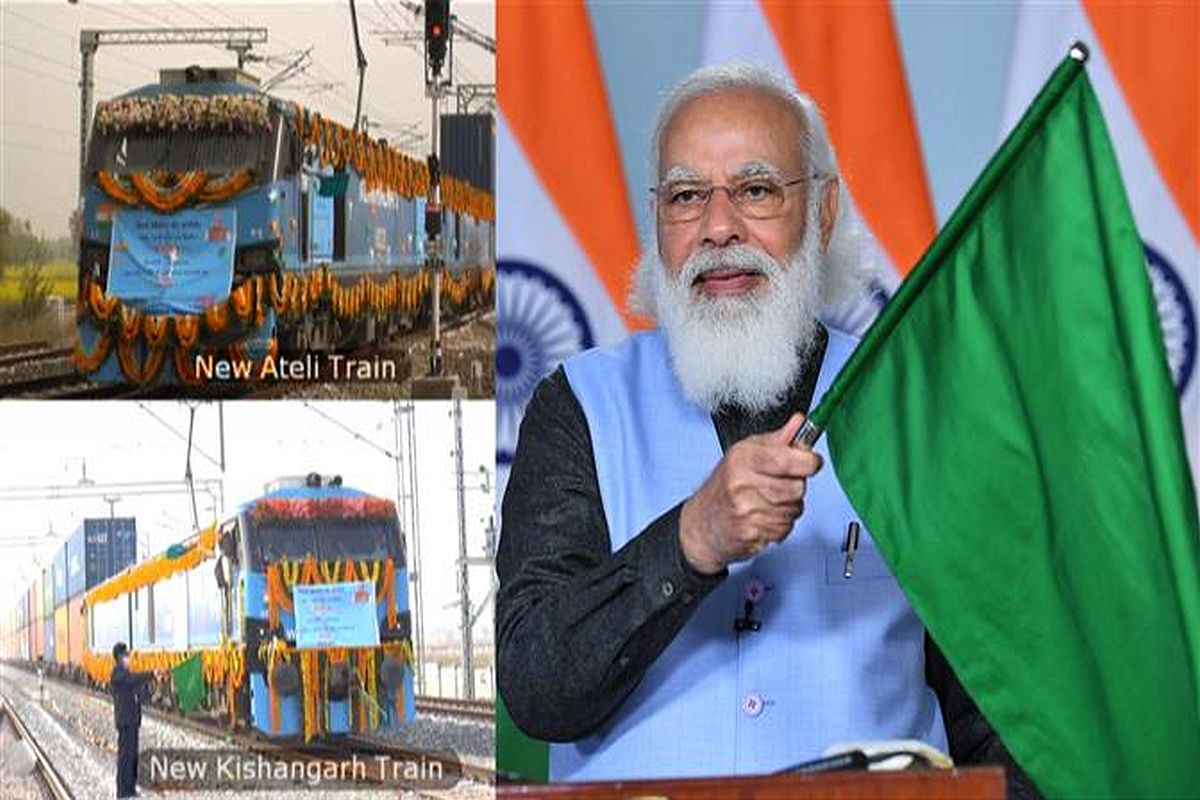In a significant development for the state of Gujarat, the Western Dedicated Freight Corridor (WDFC) has achieved a major milestone with the commissioning of 402 kilometres out of the total 565 kilometres planned, marking a significant stride in enhancing the transportation network and connectivity within the state, officials said.
The newly inaugurated section, stretching from New Bhandu to New Sanand (North), encompasses a 77-kilometre-long Broad Gauge electrified double line, along with 24 kilometres of connecting lines.
The official further informed that this vital segment of the WDFC passes through key districts including Ahmedabad, Gandhi Nagar and Mahesana, integrating three stations of Indian Railways, i.e. Sanand North to IR Goraghuma, Sanand North to IR Sanand and Mahesana through connecting lines.
Talking to ANI about this corridor, CGM of WDFC, Manish Awasthi, said that this infrastructure marvel hosts an impressive array of 19 major bridges, 105 minor bridges, 5 rail flyovers, 81 roads under bridges, and 6 roads over bridges.
Among the essential components are two DFC stations, namely New Ghumasan Crossing Station and New Sanand (N) Junction Station, enhancing the transportation landscape of the region, Awasthi added.
“The total project cost for this section amounts to approximately Rs 3,184 crore, representing a considerable investment in bolstering the state’s logistical capabilities,” he added.
Awasthi further informed that the commissioning of this corridor is anticipated to yield multiple benefits.
It establishes a direct link to major ports in Gujarat such as Pipavav, Porbandar and Jamnagar, enabling faster movement of Exim traffic and reducing transit time to Eastern and Northern India through the Dedicated Freight Corridor, he said.
“This development promises a substantial boost in connectivity to freight terminals and loading centres, including the Jamnagar area’s significant terminals like Sikka, Reliance, Essar terminals, and Mithapur,” he added.
Moreover, the corridor’s impact extends to enhancing connectivity with the dairy industry in Anand, the oil refinery in Jamnagar and linking to the Delhi-Mumbai Industrial Corridor, ultimately decongesting the existing Gujarat rail network, he said.
Some of the standout features of this corridor include exclusive operation for freight trains, the introduction of heavy-haul train operations with 32.5-ton axle loads–a first in India and the use of double-line electric tracks for higher haulage at increased speeds.
Pertinently, the project also incorporates innovative technology such as an Automated New Track Construction (NTC) machine, more powerful locomotives, high-rise overhead equipment, the Train Protection and Warning System (TPWS) for safer operations and a strong emphasis on green initiatives like water conservation through rainwater harvesting, reduced energy consumption and recycling and reuse of construction materials for sustainable operations.
The completion of this substantial length of the Western Dedicated Freight Corridor stands as a testament to India’s commitment to state-of-the-art transportation infrastructure and marks a significant leap towards revolutionising freight movement and logistical efficiency in the region, the official added.












